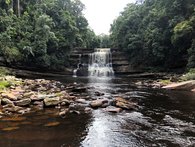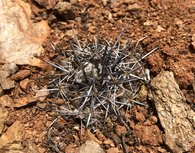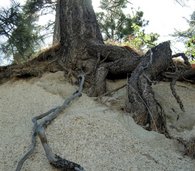Background
The Critical Zone refers to the thin skin of the Earth’s surface, from the top of tree canopies to the bottom of groundwater aquifers. It is where the geosphere, biosphere and atmosphere interact, and where many of the critical processes that make Earth habitable for humankind occur. Studying the critical zone requires an inherently holistic, multidisciplinary approach – one that can connect ‘geo’ topics - for example, geology, geochemistry, geophysics - with ecology, hydrology, atmospheric sciences, and more. Processes in the Critical Zone occur with relevant timescales from seconds to multiple millions of years. We focus on understanding how elements are moved and partitioned among different compartments in the Critical Zone.
The Critical Zone is what unites the diverse research strands of section 3.3. It is where landscapes are shaped by tectonics and biota; it is where the weathering thermostat works; it is where we develop and apply our isotope and cosmogenic nuclide tools. Most importantly, it is the zone we need to understand and protect to ensure a ‘safe operating space’ for humanity in the years to come.
Scientific key questions
- How do ecosystems meet their nutrient demands?
- What geochemical tools can we use to trace element fluxes through the Critical Zone?
- How does Critical Zone biogeochemistry intersect with landscape evolution?




